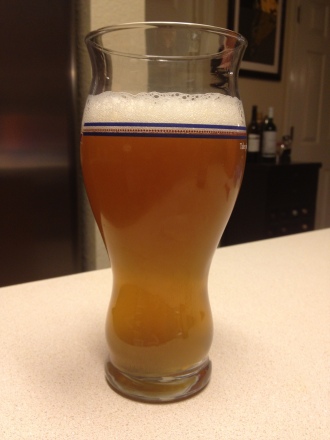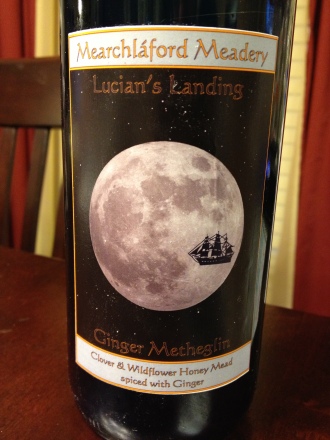Une saison à la maison
Saison.
In French, the word means season, as in the seasons of the year. Spring, summer, autumn, or winter. A generic term, a category with specimens so varied that each is the opposite of another.
Perhaps it’s no coincidence that the beer style we call “saison” is a varied, open-ended style as well. Call it a seasonal beer unattached to a particular season.
Okay, that’s not entirely true. Look it up anywhere from Wikipedia to the BJCP Style Guidelines, and you’ll learn that saison has its roots in the farmhouses of the French-speaking Walloons of Belgium who spent the winter brewing spicy, refreshing ales to be consumed in the summer by workers pulling long shifts in the fields. So traditionally it’s a summer beer.
But the Wallonian brewing tradition was highly improvisational and localized. Each farmhouse brewed their own beer with the ingredients available at the time, often raised on their own farms. The resulting beers were, unsurprisingly, vastly different from place to place and from month to month.
So unlike the seasonal beers of, say, Germany – which tend toward profile standards of characteristic Teutonic rigidity, with names easy to mark on your calendar like Märzen, Maibock, and Oktoberfest – this traditional Belgian seasonal can be light or dark, strong or sessiony, and anything in between. A December 2006 Style Profile article from Brew Your Own magazine lists a wide disparity of characteristics for the modern style in regards to color, mouthfeel, residual sweetness, strength, hop profile, and spices. The main common thread is the yeast, descended from traditional Belgian strains that produce a characteristic spiciness, an estery je ne sais quoi that makes these beers decidedly farmhousey, even when made in the (sub)urban backyard.
With that range of profiles, I’d say seasonality goes out the window. A strong, dark, spicy saison would be a great nightcap on a cold winter night. I like light, refreshing saisons in spring (I’m pretty sure spring in Texas feels like summer in Belgium anyway). So I brewed one now to be ready by the last week of March.
There was another reason for my timing besides the oncoming vernal equinox. The last beer my wife and I drank together was a bomber of Brooklyn Sorachi Ace, the day before we learned she was pregnant. Our baby is due in April, so what better beer to have on hand to celebrate her return to the world of the ethanol-metabolizing than a hop-forward saison?
I started my brew with a clone recipe of Brooklyn Sorachi Ace from the December 2011 issue of Brew Your Own and a Gallic sense of laissez-faire. The recipe called for 11 lbs (5 kg) of Belgian Pilsner malt, which I increased to 11.75 lbs (5.33 kg) to compensate for lower efficiency on my system (more on that below). This made up the bulk of the fermentables along with 1 lb (453 g) of dextrose in the boil. The recipe also used a 3-step mash, which I did not. I did a single infusion mash at 146°F (63°C). The low mash temperature makes a more fermentable wort, but saccharification takes a little longer so I mashed for 90 minutes instead of my usual 60.
Brooklyn Sorachi Ace is hopped entirely with Sorachi Ace hops, which I couldn’t get locally. Instead of replacing it with a similar substitute, I took a different path entirely. I used 16% AA Warrior hops for neutral bittering, two additions of .37 oz (10.5 g) each at 60 and 30 minutes (~6 AAU in each addition). At flameout, I added 3 oz (85 g) of 15% AA Summit.
I had prepared a 2-liter starter of White Labs WLP 560, an Austin Homebrew Supply-exclusive Classic Saison Yeast Blend. That starter was decanted and pitched into a wort with an OG of 1.073, eleven points higher than my target OG of 1.062. Eleven points!
Little mishaps are common in brewing, and usually a good sign. Minor, easily correctable problems during the brew day keep the brewer on his/her toes, and (I think) make us less prone to serious mistakes that can’t be fixed. But overshooting target gravity by this much is a new kind of problem for me.
Is it even a problem? Obviously my efficiency is much higher than I thought – I’m noting the data for future batches – and the extra malt I added was unnecessary: a “problem” many brewers would love to have. I’m not entering any contests, so the fact that my OG landed past the upper limit of the BJCP range for saison doesn’t concern me. If it fails to attenuate completely, I may end up with a beer that’s too sweet. But if I got the kind of fermentability I was shooting for out of my low mash, that extra sugar should ferment out, leaving me with an ABV higher than I intended.
So if I’m lucky, I’ll be welcoming the spring with a dry, high-alcohol saison. Maybe it won’t be strong enough to qualify as an “imperial saison”, but it should be worthy of some noble title. I’d settle for “ducal saison” or better yet, “marchional saison”. With its extra kick, it might be a little too intense for farm work, but it sounds about right for celebrating the birth of a new Marchese.




